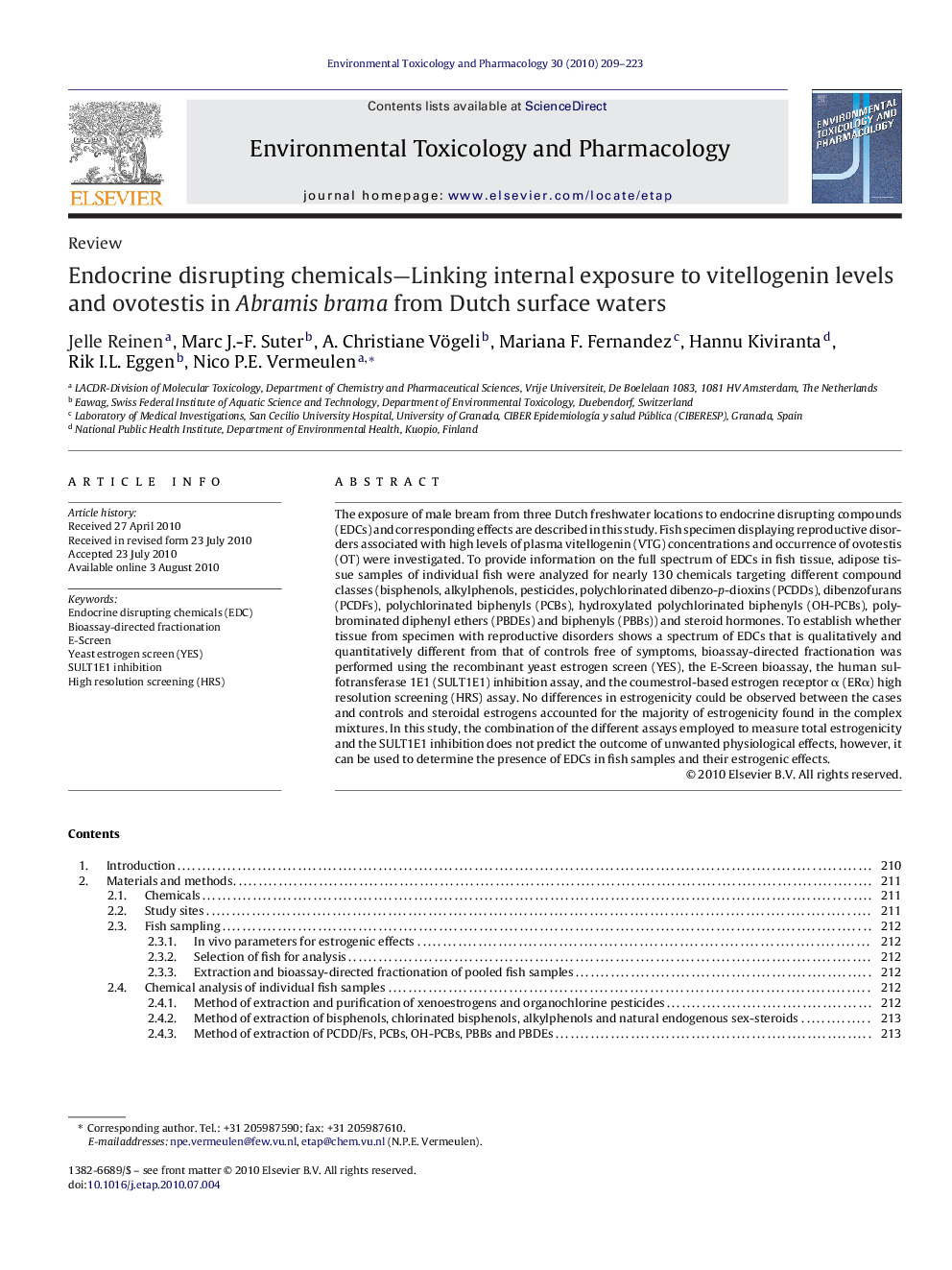| کد مقاله | کد نشریه | سال انتشار | مقاله انگلیسی | نسخه تمام متن |
|---|---|---|---|---|
| 2583376 | 1561705 | 2010 | 15 صفحه PDF | دانلود رایگان |

The exposure of male bream from three Dutch freshwater locations to endocrine disrupting compounds (EDCs) and corresponding effects are described in this study. Fish specimen displaying reproductive disorders associated with high levels of plasma vitellogenin (VTG) concentrations and occurrence of ovotestis (OT) were investigated. To provide information on the full spectrum of EDCs in fish tissue, adipose tissue samples of individual fish were analyzed for nearly 130 chemicals targeting different compound classes (bisphenols, alkylphenols, pesticides, polychlorinated dibenzo-p-dioxins (PCDDs), dibenzofurans (PCDFs), polychlorinated biphenyls (PCBs), hydroxylated polychlorinated biphenyls (OH-PCBs), polybrominated diphenyl ethers (PBDEs) and biphenyls (PBBs)) and steroid hormones. To establish whether tissue from specimen with reproductive disorders shows a spectrum of EDCs that is qualitatively and quantitatively different from that of controls free of symptoms, bioassay-directed fractionation was performed using the recombinant yeast estrogen screen (YES), the E-Screen bioassay, the human sulfotransferase 1E1 (SULT1E1) inhibition assay, and the coumestrol-based estrogen receptor α (ERα) high resolution screening (HRS) assay. No differences in estrogenicity could be observed between the cases and controls and steroidal estrogens accounted for the majority of estrogenicity found in the complex mixtures. In this study, the combination of the different assays employed to measure total estrogenicity and the SULT1E1 inhibition does not predict the outcome of unwanted physiological effects, however, it can be used to determine the presence of EDCs in fish samples and their estrogenic effects.
Journal: Environmental Toxicology and Pharmacology - Volume 30, Issue 3, November 2010, Pages 209–223